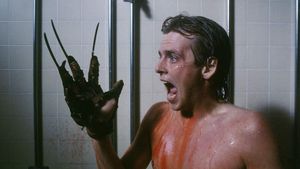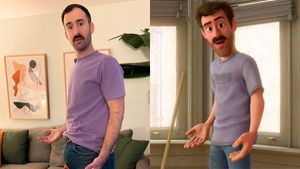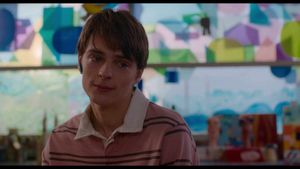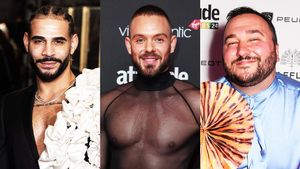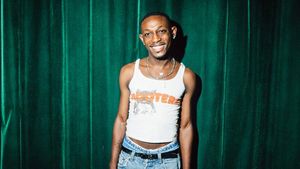Treatment GuideJust DiagnosedSex & DatingAfrican AmericanStigmaAsk the HIV DocPrEP En EspañolNewsVoicesPrint IssueVideoOut 100
CONTACTCAREER OPPORTUNITIESADVERTISE WITH USPRIVACY POLICYPRIVACY PREFERENCESTERMS OF USELEGAL NOTICE
© 2025 Pride Publishing Inc.
All Rights reserved
All Rights reserved
By continuing to use our site, you agree to our Privacy Policy and Terms of Use.
People with HIV who drop out of care do not live as long as those who remain under a physician's treatment, say researchers from the U.S. Department of Veterans Affairs and Baylor College of Medicine in a report published in the June 1 issue of Clinical Infectious Diseases. 'In an era when highly active therapy directed against HIV is keeping people alive, understanding the value of regular medical care is crucial,' says Thomas Giordano, an assistant professor of medicine and infectious diseases at Baylor and the lead author of the report. 'We know that adherence to medications is critically important. Patients who have trouble taking their medicines regularly will do less well. But what about those people who aren't even seeing a doctor regularly? Before this study we had only a vague understanding of the magnitude of the problem, and we certainly didn't know whether it affected survival.' While HIV is now a chronic, lifelong disease, it typically strikes at a relatively young age. That makes the population different from one that has high blood pressure or adult-onset diabetes. 'These patients often have a lot of other things going on,' Giordano says. 'They are young. Often they face challenges of substance abuse, mental health problems, and financial issues. Now, they have to stay in care the rest of their lives, which may be 20, 30, 40, or more years.' Giordano's study, carried out in the VA population, determined that staying in care made a difference in longevity. Studying those in the VA population eliminated the issue of ability to pay for care, enabling him and his colleagues to look at care alone. They studied 2,619 men with HIV for more than four years. Most were diagnosed in 1997 or 1998 at a VA hospital or clinic and began treatment after January 1, 1997. Researchers divided the men into four groups, based on the number of quarters in the first year after starting treatment that they visited their HIV physicians or health care provider. Sixty-four percent of them had at least one visit in all four quarters, 18% in three of four quarters, 11% in two of four quarters, and 6% in only one quarter. The researchers then looked at how long the patients survived after that first year. Sixteen percent of the patients died. Those who had poorer retention in care or visited the physicians less during the year after starting treatment had a greater risk of dying than those who saw the physicians at least once each quarter. Patients with visits in only one quarter had nearly twice the risk of dying compared to patients with visits in all four quarters. 'The next step is to figure out how to get them to stay in care,' Giordano says. He plans to look for ways to intervene in this process. He is now studying a group of people who are newly diagnosed with HIV in Houston to evaluate the effects of socioeconomics, knowledge about the disease, and other factors on retention in care. --Benjamin Ryan
From our Sponsors
Most Popular
BREAKING: Supreme Court rules to save free access to preventive care, including PrEP
June 27 2025 10:32 AM
Thanks to U=U, HIV-positive people can live long, happy, healthy lives
July 25 2025 2:37 PM
The Talk: Beyond the exam room
August 13 2025 3:15 PM
Plus: Featured Video
Latest Stories
Amazing People of 2025: Javier Muñoz
October 17 2025 7:35 PM
It’s National PrEP Day! Learn the latest about HIV prevention
October 10 2025 9:00 AM
“I am the steward of my ship”: John Gibson rewrites his HIV narrative
September 16 2025 2:56 PM
“So much life to live”: Eric Nieves on thriving with HIV
September 03 2025 11:37 AM
The Talk: Owning your voice
August 25 2025 8:16 PM
The lab coat just got queer
August 21 2025 10:00 AM
Messenger RNA could be the key to an HIV vaccine — but government cuts pose a threat
August 20 2025 8:02 AM
The Talk: Navigating your treatment
August 01 2025 6:02 PM
The Talk: Starting the conversation
July 25 2025 4:47 PM
How the Black AIDS Institute continues to fill in the gaps
July 25 2025 1:06 PM
“I felt like a butterfly”: Niko Flowers on reclaiming life with HIV
July 23 2025 12:22 PM
Dancer. Healer. Survivor. DéShaun Armbrister is all of the above
July 02 2025 8:23 PM
1985: the year the AIDS crisis finally broke through the silence
June 26 2025 11:24 AM
VIDEO: A man living with HIV discusses his journey to fatherhood
June 10 2025 4:58 PM
Trump admin guts $258 million in funding for HIV vaccine research
June 03 2025 3:47 PM
Grindr is reminding us why jockstraps are so sexy and iconic
May 02 2025 5:36 PM
HRC holds 'die-in' to protest Trump health care cuts
April 28 2025 2:11 PM
Two right-wing Supreme Court justices signal they may uphold access to PrEP and more
April 21 2025 4:10 PM
Trending stories
Recommended Stories for You






























